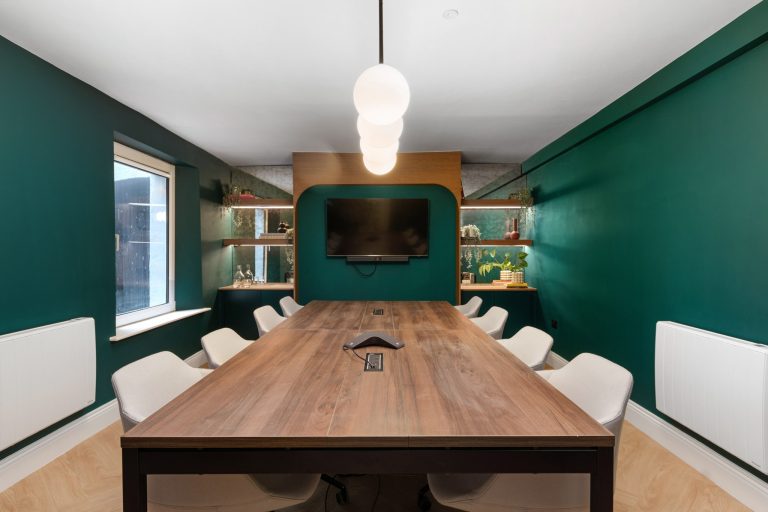We’ve all enjoyed the idea of working from home at one point or another and now our wishes have come true, at warp speed.
The outcome? A positive experience for many, a mixed experience for others and a difficult experience for some.
That said, we now have a solid starting point which can guide businesses on how best to establish their remote working strategies for the new normal.
Define Your Parameters
Remote work eligibility will vary from role to role within any organisation. On the one hand, there are roles which are immediately eligible for remote work, for example knowledge based workers, graphic designers, and so on.
On the other hand you’ll have staff that can work on a quasi-remote basis and then there are staff that must be in the office to perform their jobs.
The key is to integrate all team members both remote, semi-remote and onsite in a way that cultivates smooth, consistent communication. The best way to achieve this is to create a tangible focal point, a HQ, an anchor for your team, a hub from where a fledgling remote working policy can find it’s way and develop organically and at the right pace. A physical office.
For full time remote team members, give them the ability to drop by when they feel the need and to connect with full time staff. Find a place for them or set scheduled times when space permits so that their presence can be accommodated. Team members who either logistically or for other reasons can’t visit the office can be accommodated by designated get togethers such as an annual company retreat, non-work related activity or corporate event.
As businesses and CFO’s reflect on the outcome of the Covid-19 remote experiment, it will be easy to emphasise on the savings to be made by ditching the office. Certainly these potential savings cannot be ignored and many businesses will now look to this fixed asset cost. However, the value of the office is more than just a place to be productive. Rather, it’s a tangible connector for human beings to touch base, catch up, socialise and collaborate in ways that are not possible to do remotely.
To dig deeper on this idea, let’s take a look at some challenges of remote working and how adopting an office anchored workforce model can overcome them.
Communication
The chosen communication medium influences both the speed and the accuracy of that communication and ultimately the outcome. Visual cues, facial expressions and physical gestures are just some of the things that are diminished on a video call.
Recently, one of our remote team members was giving instructions to our center managers on where to place Covid-19 behavioural signage around the building. Simple enough via email, or perhaps video call? Not really. To ensure that everything was right we ended up preparing sets of floor plans with a map legend. It ended up resembling a set of planning application maps and it took a while.
Something that could have taken minutes face-to-face took hours while working remotely.
Face to face meet ups will reduce the “get to know you” curve that’s needed to develop trust among team members and ultimately high levels of productivity. The office provides a defined venue for this to take place. For some, this may happen just once and for others, several times a month. This takes commitment and sometimes the cost of funding employee travel and accommodation, but if you are going all in on remote working this approach will pay dividends.
Social Connection
The physical workplace provides a level of social interaction and connection among colleagues which is difficult to replicate over a video call or an instant messenger like slack. As well as eroding team cohesion, this disconnect can impact negatively on the mental health of staff, particularly for the younger workforce for whom social interaction is part of their workplace development.

“The physical office is a tangible connector for human beings to touch base, catch up, socialise and collaborate in ways that are not possible to do remotely”
When team members know that they have the ability to “drop by” the office, the sense of isolation that would otherwise prevail in full remote working environment is alleviated. Let staff know about drop in policies by including it in your on-boarding process, corporate policies and team communications. Manage the process carefully so that they feel welcome when they are on site.
Out of Sight / Out of Mind ?
Remote work employees sometimes feel that a lack of physical attendance in the office can give rise to a disadvantage when it comes to promotion time. They can also feel less valued when compared to on-site staff. Unfavorable treatment on this basis is a form of discrimination but it can arise on a subconscious level.
Arranging for managers to meet team members face-to-face at the office HQ at least a couple of times a year can help them to feel valued on a par with the on site team members. Develop this strategy by developing a culture where employees are compared predominantly on performance only and implement work policies that can measure worker performance in a way that ignores office attendance and adopt “remote first policies” whereby all staff members use remote working techniques regardless of whether they are located in the office or not.



